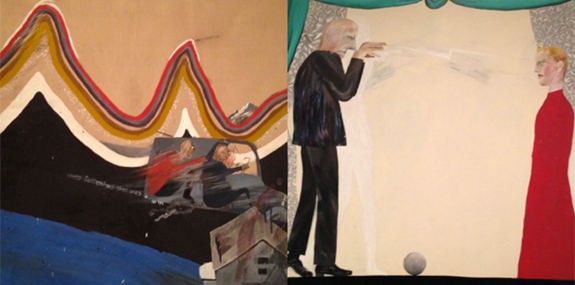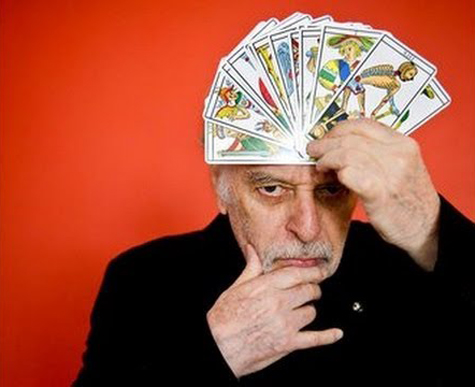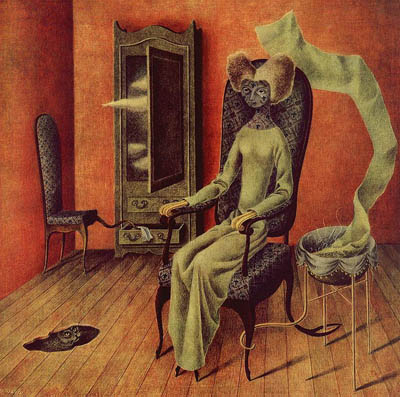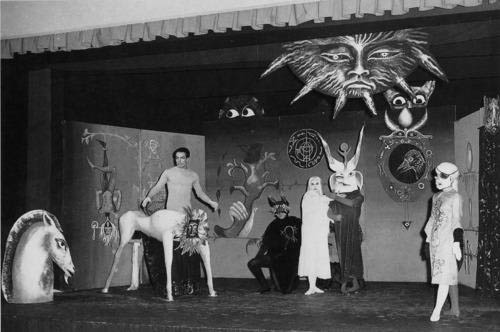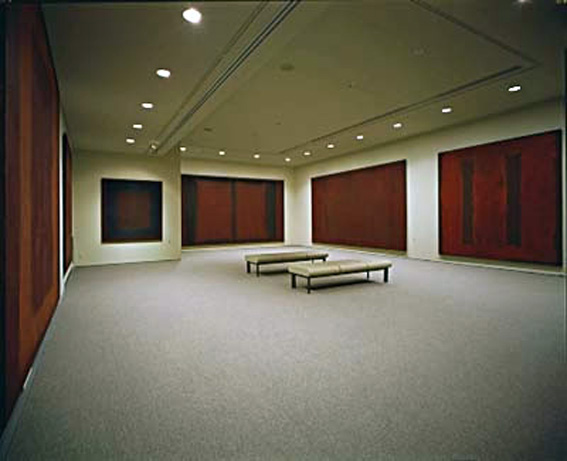Sea voyages within a precious stone
Catherine Henke
Randee Silv
February 2018
Exchanging Field Notes:

I found this black and white image in a newspaper with the title “Egypt is crying its 305 dead,” taken after a terrorist attack in a mosque last Saturday. The shoes of the faithful are normally lined up carefully outside of the mosque, but in this picture they are a mess, the only sign that something is wrong. It reminded me about the work of a Japanese artist, Chiharu Shiota (a pupil of Marina Abramovic), who makes installations with objects, working with memories. Her installations involve very familiar objects, everyday objects, the kind of objects you don’t think too much about when they’re in use, but when they’re not in use, they start to take on different meanings. She deals with how familiar objects gain and lose meaning and what an object says about its owner. In one of her installations, she tied red yarn to hundreds of unpaired shoes. Here shoes are acting like a second skin, containing the imprint of a person. With each shoe, there is a written message from the ex-owner. In the newspaper image, we find a kind of chaos denouncing that something wrong had happened. In the artistic work there is a very precise organization, where the object is completely non-functional and emphasizing a different message.
Images documenting objects covered the walls. Objects expected to trigger responses, to acknowledge backstage connections. I felt trapped in a visual dialogue that seemed calculated, deliberate, as if a long cord was holding me in place, like the miscellaneous shoes in her installation. I kept thinking about the other ones, the ones left scattered, tangled in knots with nowhere to go. The David Hockney retrospective that spans 60 years was in the next room. Flight into Italy – Swiss Landscape got me thinking about vehicles as objects of escape, whether by choice or necessity. About the immediacy of departure, routes and directions, high mountain peaks, obstacles and road blocks. I stopped to gaze into the eyes of The Hypnotist aware that anyone of us could fall under his spell. How do we react to the power of someone else’s words? Is it positive or destructive? Are you being reeled in like a fish? People as objects, as sponges, can be devices to be used and discarded. Do you know the work of the Chilean artist, Alfredo Jaar? About his public interventions? He was speaking last night, so I went. The Gift, was originally done in 1998 to address the Rwanda genocide. Last year at Art Basel, he did a similar project to raise awareness on the refuge crisis in support of MOAS (Migrant Offshore Aid Station), the search and rescue team. Over 12,000 blue boxes were given away, and when unfolded there was an image of the beach where the body of a three year old Syrian boy had been found. Jaar said, “It’s very sad. It’s a tragedy. We are less and less human, and so to assist and help the refugees would be a very small sign in order to recoup some of our lost humanity. It seems so logical, so normal, so human.”
Snake. Snaking spell. Like making a step in the emptiness and letting it flow. Don’t know if anyone has fallen under such a hypnotic spell, but surely we need to meet the magician, the one that exists inside of each of us but not easy to let manifest. Obviously the magician is present when we are creating. Looking at everything as if it were the first time, no beginning, no end. Just dreaming, transforming reality around us.
If you were sleeping
And if when sleeping,
You were dreaming?
And if, in your dream,
You were going up to the sky,
And picking
A flower strange and beautiful?
And if, waking up
You find the flower
In your hand?
So…?
The magician takes us out of our limits; projects us into an infinite space. Here comes Alejandro Jodorowsky (Chilean-French artist), a hypnotist, a prestidigitator, a curandeiro? EL MAESTRO E LAS MAGAS
Postcards of Remedios Varo’s paintings are on the wall above my desk from an exhibition I’d seen in Mexico City that also included works by Leonora Carrington, Wolgang Paalen and Alice Rohan. I can feel the constant presence of images inside dreams, of magical forces, of potions, of sorcery, mysterious and serene.
Varo describes her painting Mimesis: “This woman is lost in her thoughts and has remained motionless for so long that she is turning into the armchair, her flesh has become just like the cloth on the chair and her hands and feet are already turned into wood, the furniture gets bored and the armchair bites the table, the chair in the background investigates what the drawer contains, and the cat, which went out to hunt, is frightened and astonished upon returning as he sees the transformation.”
Octavio Paz wrote this tribute to her in 1966.
Remedios Varo’s Appearances and Disappearances
With the visible violence of wind scattering
clouds, but with greater delicacy, as if she
painted with her eyes rather than with her
hands, Remedios sweeps the canvas clean and
heads up clarities on its transparent surface.
In their struggle with reality, some painters
violate it or cover it with signs, explode it
or bury it, flay it. Remedios volatizes it:
it is not blood but light that flows through
its body.
She slowly paints lightning-quick apparitions.
Appearances are the shadows of archetypes.
Remedios does not invent: she remembers.
Except that these appearances resemble nothing
and no one.
Sea voyages within a precious stone.
A speculative painting, a mirror-image painting:
not the world in reverse, but the reverse
of the world.
The art of levitation: the loss of gravity,
the loss of seriousness. Remedios laughs,
but her laughter echoes in another world.
Space is not an expanse but a magnet attracting
Appearances. A woman’s hair…the strings
of a harp…the sun’s rays streaming down
…the strings of a guitar. The world seen
as music: listen to Remedios’s lines.
The secret theme of her work: harmony…lost
equality.
In Appearances she paints Disappearance.
Roots, fronds, rays, locks of hair, flowing
beards, spirals of sound: threads of death,
of life, of time. The weft is woven and un-
woven: the unreality that we call life, the
unreality that we call death…only the canvas
is real. Remedios the anti-Moira.
She does not paint time, but the moments when
time is resting.
In her world of stopped clocks, we hear the
flow of substances, the circulation of shadow
and light: time ripening.
Forms see their own form, form seeks its own
dissolution.During the Spanish Civil War, Varo fled to Paris, and when France was occupied by the Nazis, she joined other surrealist artists who had taken refuge in Mexico City. Bonding with Kati Horna & Leonora Carrington, all fiercely independent, they each delved completely into the creative powers of their imaginations to communicate the incommunicable.
Carrington collaborated with Jodoworsky on the production of her play Penelope (1957) about the occult. She designed the stage set and costumes. He had been sent to her by his Zen master who told him that “she doesn’t know any koans, but she has resolved them all.” I just finished reading The Complete Stories of Lenora Carrington and one of her characters says, “And . . . I believe . . . no I”m sure, that I can see the objects in the room behind me through my body.”
When Jodorowsky entered for the first time into Leonora Carrington’s house, his thoughts were the following:
“If the outside of the house looked like a prison, the interior was a magical extension of her mind. The painter was in each piece of furniture, in each object, in each of the many plants that grew exuberantly in every corner.”
We can feel the same in this painting Mimesis of R. Varo: she is everywhere. In this painting, I don’t see this woman lost in her thoughts, but more a woman in meditation, straight and motionless, expecting to get rid of her thoughts.
It evokes me very little. These simple drawings I made some years ago are about wrapping and unwrapping a portrait. In the first drawing, a page of blue lines, moving lines, drawn lines, writing lines, like writing an identity: a portrait is born. In the second one, I unwrap the portrait to lose the identity, starting a movement till nothing is left: the portrait is disappearing and the rest is a white page, a black hole, landscapes, scenarios, worlds, universes…images…..The universe is our body.
In Appearances she paints Disappearance.
Just the person, the ego disappears, the rest is still here. In fact it doesn’t disappear, it is just part of the whole thing.
We are ripples of energy
on an immense ocean of energy.
When we evict the ego,
we access the total memory.– Deepak Chopra, from The Way of the Wizard
There are so many ways of expressing the same feelings, as many ways as there are ripples in the ocean. It reminds me of the strong impact the paintings of Rothko made on me. But, more than any other piece of art, these paintings don’t support the reproduction; you must look at the original ones.
“My paintings’ surfaces are expansive and push outward in all directions, or their surfaces contract and rush inward in all directions. Between these two poles, you can find everything I want to say.” Mark Rothko
My first meeting with Rothko’s paintings was in the Tate Gallery in London when I was 17 years old. I entered this room to a view of these huge paintings, and I just sat down and got immersed in this cosmic breathing for an instant of eternity.
After twelve years in storage, Rothko gifted these nine Seagram murals that were originally commissioned for the Four Seasons restaurant to the Tate in 1970. After seeing where they were to be installed, he realized that his art was not going to shake up or change the wealthy diners in this noisy, oppressive & pretentious atmosphere, but would only be seen as decoration. “Anybody who will eat that kind of food for those prices will never look at a painting of mine.” He returned the money and withdrew from the project.
One account is that Rothko believed they were to be hung in a small boardroom where they’d be visible to employees from an adjoining cafeteria. Another is that he did know exactly what he was doing and that he’d hoped to “to ruin the appetite of every son of a bitch who ever eats in that room.” Influenced by his recent visit to Michelangelo’s Laurentian Library vestibule in Florence with its sealed windows that gave a feeling of no way out, Rothko wanted to create a space that would make patrons “feel that they are trapped in a room where all the doors and windows are bricked up, so that all they can do is butt their heads forever against the wall.”
Poet Stanley Kunitz saw Rothko as “a shaman who finds the magic formula and leads people to it.” I remember when you could sit at MoMA with very little distraction & disturbances and venture further & deeper into the weightlessness of sensations surfacing, not knowing what you’d find. A continuous conversation between Rothko, his paintings and oneself.
You could think about what Rothko meant when he said “I’m interested in expressing the big emotions – tragedy, ecstasy, doom… and if you… are moved only by their color relationships, then you miss the point.”
Trying to rid oneself of thoughts. Can you disengage from them by putting each in a box and tossing them out to sea?
Wrapping and unwrapping a portrait. Interesting idea. Blankness. Losing identity. Unravelling what was from what is to what can be. Inside can’t be separated from outside. The painting on the left is somewhere in storage. The one on the right I recently saw in a David Smith exhibition.
Appearances. Disappearances. Deportations. Just too many. “The secret theme of her work: harmony…lost equality.”

